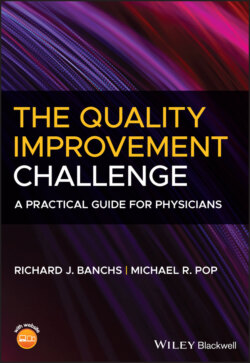Читать книгу The Quality Improvement Challenge - Richard J. Banchs - Страница 34
Project Selection Criteria
ОглавлениеFor each problem you have identified, define the current state of performance and compare it to the ideal state of performance. Do you have data you can use? What is the gap between the current state and ideal state of performance? How will we know we need to improve if we don’t have data? What issues are critical? Narrow down the list of projects to those that address critical issues or are directly related to them. For each project, write a summary statement that details the current state versus ideal state and the gap between them. Define your project’s desired outcomes.
Consider the scope and complexity of the improvement effort. What resources are available? Choose wisely! Consider your availability as well as the availability of project leaders, team leaders, and team members, especially if their involvement in the project is not part of their primary role. Remember, you still have a full‐time job!
Several criteria are important to consider when selecting your project:
The Aim/ Purpose. Every QI project must be related back to the overall strategic initiatives and goals of the organization (department, unit) via the metrics of the project. Project metrics such as safety, quality, productivity, or costs must be traceable both up and down throughout the organization. What is the gap between the ideal state and current state of the process performance? How do you know? Is the project targeting the internal or the external customer?
Scope. What work process will be the focus of your QI project? What will be the start point and what will be the end point? What performance gap are you trying to close? Is your project overly ambitious for the time allowed? Make sure the scope of your project is realistic and you are not trying to take on too much, often referred to as “trying to boil the ocean.”
Leadership. Make sure senior and local leadership can actively engage in supporting the project and are willing and able to provide the necessary resources (time, personnel, administrative assistance, money). Remember, one of the most important resources is time! Time away from clinical duty is needed to actually be able to successfully complete and implement the QI project.
Timeline. Can the project realistically be completed within a one‐ to six‐month period? A good rule of thumb is for the first couple of projects to set the target to one to three months. If the project duration extends longer than six months, other issues may arise that will make it difficult to complete your project.
Competing priorities. Will any other initiatives be affecting the process targeted for improvement?
